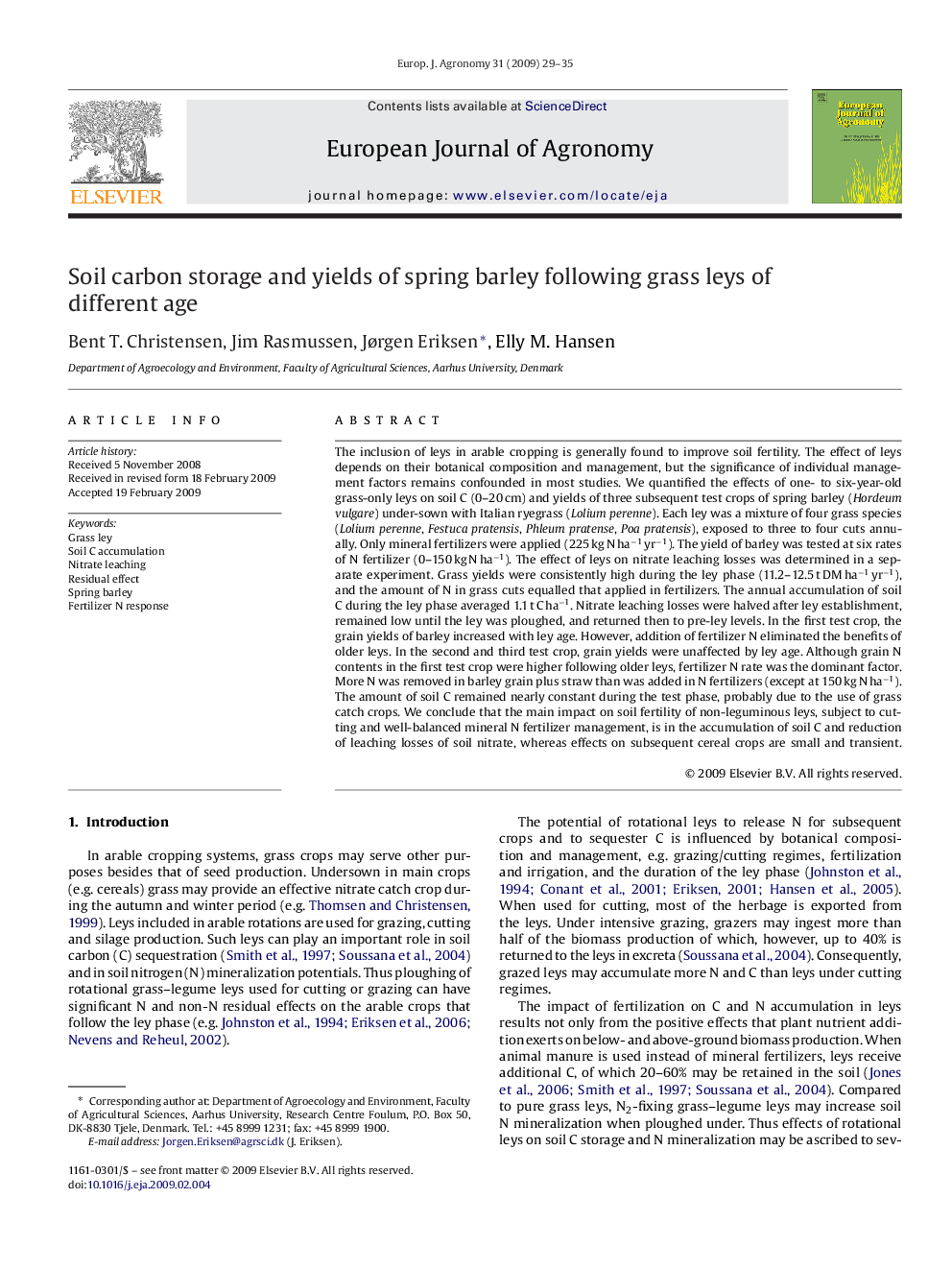| کد مقاله | کد نشریه | سال انتشار | مقاله انگلیسی | نسخه تمام متن |
|---|---|---|---|---|
| 4509434 | 1624510 | 2009 | 7 صفحه PDF | دانلود رایگان |

The inclusion of leys in arable cropping is generally found to improve soil fertility. The effect of leys depends on their botanical composition and management, but the significance of individual management factors remains confounded in most studies. We quantified the effects of one- to six-year-old grass-only leys on soil C (0–20 cm) and yields of three subsequent test crops of spring barley (Hordeum vulgare) under-sown with Italian ryegrass (Lolium perenne). Each ley was a mixture of four grass species (Lolium perenne, Festuca pratensis, Phleum pratense, Poa pratensis), exposed to three to four cuts annually. Only mineral fertilizers were applied (225 kg N ha−1 yr−1). The yield of barley was tested at six rates of N fertilizer (0–150 kg N ha−1). The effect of leys on nitrate leaching losses was determined in a separate experiment. Grass yields were consistently high during the ley phase (11.2–12.5 t DM ha−1 yr−1), and the amount of N in grass cuts equalled that applied in fertilizers. The annual accumulation of soil C during the ley phase averaged 1.1 t C ha−1. Nitrate leaching losses were halved after ley establishment, remained low until the ley was ploughed, and returned then to pre-ley levels. In the first test crop, the grain yields of barley increased with ley age. However, addition of fertilizer N eliminated the benefits of older leys. In the second and third test crop, grain yields were unaffected by ley age. Although grain N contents in the first test crop were higher following older leys, fertilizer N rate was the dominant factor. More N was removed in barley grain plus straw than was added in N fertilizers (except at 150 kg N ha−1). The amount of soil C remained nearly constant during the test phase, probably due to the use of grass catch crops. We conclude that the main impact on soil fertility of non-leguminous leys, subject to cutting and well-balanced mineral N fertilizer management, is in the accumulation of soil C and reduction of leaching losses of soil nitrate, whereas effects on subsequent cereal crops are small and transient.
Journal: European Journal of Agronomy - Volume 31, Issue 1, July 2009, Pages 29–35